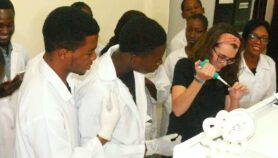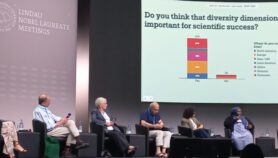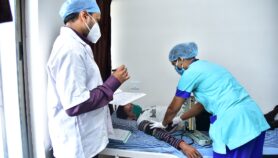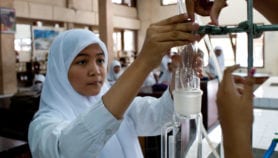By: Y. S. Rajan
Send to a friend
The details you provide on this page will not be used to send unsolicited email, and will not be sold to a 3rd party. See privacy policy.
Indian science has many reasons to be grateful to A. P. J. Abdul Kalam, the country’s recently retired president, maintains Y. S. Rajan.
With his high-tech multimedia presentations and his introduction of low-energy light bulbs, high-bandwidth connectivity and a herbal garden into Rashtrapati Bhavan, the Indian president’s official residence, A. P. J. Abdul Kalam certainly left an unusual mark on the presidency before his term of office ended in July at the age of 76.
Kalam was the first scientist in independent federal India’s 60 years to be elected president by the central parliament or state assemblies. His enthusiasm for science as strong as ever, he was known for personally answering emails on scientific subjects from students and other citizens during his five years in office.
He constantly reminded children, politicians and the general public that science and technology are crucial to national development and the fight against poverty. He was confident that the days of a ‘developed’ India were not a distant dream.
The Indian presidency is largely a ceremonial office with only a few powers. But Kalam used his non-political technocrat image and his popular standing as “the people’s president” to put across his views on science.
His fame as father of India’s missile programme also helped him to promote science and technology — his endorsement could be relied on to garner wide-ranging support for nanotechnology or biofuel projects, for example, the use of thorium for nuclear power and the government’s manned space mission in 2014.
When he became president, Kalam was involved in ‘Vision 2020’, which outlines science and development milestones to be achieved by 2020, notably in agriculture, stem-cell research and nanotechnology. It arose from a study by the government-funded Technology Information, Forecasting & Assessment Council, of which Kalam was chairman. In office, his advocacy gave the vision further important exposure.
Nanotechnology is just one area where Kalam used his non-executive office to popularise particular issues and gain support. He organised a special workshop at Rashtrapati Bhavan that brought together senior scientists in the field. The workshop acted as a catalyst in directing Indian efforts in nanotechnology and facilitated the process by which US$250 million was allocated to the sector in the national budget.
Similarly, Kalam promoted the concept of energy independence, proposing biofuels, high-efficiency solar cells based on carbon nanotubes, and thorium-based nuclear power as options suitable for India.
A two-day workshop involving scientists, entrepreneurs and farmers working with biofuels, particularly the vegetable oil jatropha, captured the imagination of stakeholders, but it may take some time yet for hard results to emerge.
Kalam’s promotion of and participation in e-education inside and outside India has probably had the most visible impact. At the second session of the Pan-African Parliament in South Africa in 2004 he announced that India would be inaugurating and financing a 53-nation Africa initiative that aims to provide an integrated satellite, fibre optics and wireless network for higher education, skill enhancement and capacity building, with some capabilities for telemedicine and e-governance. Operations are expected to begin by the end of the year or in early 2008.
Overall, Kalam got people talking about many scientific issues. But India still has far to go. The growth rate of Indian S&T publications is increasing at a remarkable rate, but the citation impact is comparatively low; budget allocations to the S&T sector continue to rise, but most come from central government, with little from the states; at 26 per cent, industry’s share of S&T is the same as before India’s economic reforms began in the 1990s.
And apart from drugs and pharmaceuticals, research and development by major industries remains at a mere 1–2 per cent of sales turnover.
Indian companies continue to be big importers of equipment, technology and know-how. Research and applied research output and commercialisation are poor. Even in the information technology sector, seen as iconic by policy-makers and the public, the country’s share of the US$180 billion global software market is estimated to be only 0.2 per cent.
Breakthroughs in basic research output or innovative applied research projects will occur only when India’s S&T system is totally reformed to eliminate structural problems in policy-making, organisation and governance. It is increasingly difficult for younger people to strike new paths. On the industry front, too, little true venture capital is available for new research ideas.
More on Capacity building

Script media release
Journalists offered ‘big break’ mentoring opportunity from Radio Nigeria
03/04/19












